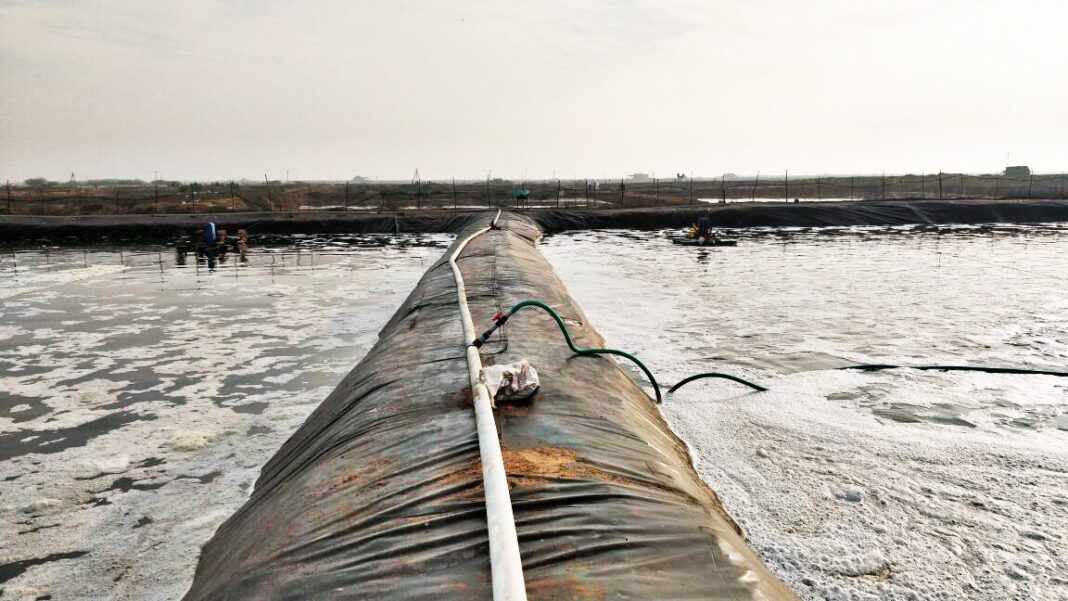When it comes to managing water bodies like ponds, reservoirs, or even decorative water gardens, pond lining sheets are an essential tool. These liners prevent water leakage, protect the surrounding environment, and help reduce maintenance costs. Whether you’re planning to create a pond in your backyard or need a water storage solution for agricultural purposes, this guide will provide you with all the necessary insights into pond lining sheets, their types, benefits, and more.
What Are Pond Lining Sheets?
Pond lining sheets are impermeable membranes used to retain water in various applications such as ponds, water gardens, reservoirs, and irrigation systems. These liners create a barrier that prevents water from seeping into the ground, ensuring that your pond or reservoir holds water efficiently.
Why Are Pond Liners Important?
Pond liners are essential for multiple reasons:
- Preventing Water Leakage: Without a pond liner, water will gradually seep into the soil, leading to water loss.
- Environmental Protection: Liners protect the surrounding environment from erosion and prevent contaminants in the soil from leaching into the pond water.
- Cost Efficiency: Investing in a quality pond liner reduces long-term maintenance costs as it helps maintain water levels, reducing the need for constant refilling.
Types of Pond Lining Sheets
When selecting a pond liner, it’s essential to understand the different materials available. Each type of liner has its strengths and weaknesses, depending on your application.
HDPE (High-Density Polyethylene) Pond Liners
HDPE pond liners are one of the most popular choices due to their high durability and resistance to harsh environmental conditions. They are also eco-friendly as they can be recycled after use.
EPDM (Ethylene Propylene Diene Monomer) Pond Liners
EPDM liners are known for their flexibility, making them perfect for ponds with irregular shapes. They are resistant to UV rays and extreme temperatures, providing a long-lasting solution for residential and commercial ponds.
PVC (Polyvinyl Chloride) Pond Liners
PVC liners are a more budget-friendly option. While they are not as durable as HDPE or EPDM liners, they can be an excellent choice for small ponds or temporary water bodies.
Butyl Rubber Pond Liners
Butyl rubber is highly flexible and durable, making it a premium choice for custom-shaped ponds. However, they tend to be more expensive than other types of liners.
Pros and Cons of Different Pond Liner Materials
To help you decide, here’s a breakdown of the advantages and disadvantages of each material:
| Material | Pros | Cons |
|---|---|---|
| HDPE | Durable, eco-friendly, UV resistant | Less flexible |
| EPDM | Highly flexible, weather resistant | More expensive |
| PVC | Cost-effective, easy to install | Less durable, can crack |
| Butyl Rubber | Extremely flexible, long-lasting | High cost |
Key Benefits of Using Pond Lining Sheets
Using a pond liner provides multiple benefits:
- Water Conservation: By preventing leakage, pond liners ensure you retain water and avoid waste.
- Durability: A quality pond liner protects the pond’s base from plant roots and sharp objects, enhancing the overall lifespan of the pond.
- Low Maintenance: Properly installed pond liners reduce the need for constant repairs and water refilling.
How to Choose the Right Pond Lining Sheet
Choosing the best liner for your pond depends on several factors:
- Size: Ensure the liner is large enough to cover the entire pond with some overlap for secure installation.
- Climate: For regions with extreme temperatures, opt for a material like EPDM that can withstand weather fluctuations.
- Budget: Consider both the initial cost and the long-term savings of durable liners like HDPE.
Installation Guide for Pond Lining Sheets
Tools and Materials Needed:
- Liner of your choice
- Underlayment for extra protection
- Utility knife
- Shovel
- Adhesive or seam tape (if needed)
Step-by-Step Installation Process:
- Prepare the Area: Excavate the pond area to your desired depth and shape, removing any sharp objects.
- Add Underlayment: Lay down underlayment to protect the liner from punctures caused by rocks or roots.
- Install the Liner: Spread the liner over the pond, ensuring it fits snugly into corners and contours.
- Secure the Edges: Use rocks or soil to secure the liner’s edges, leaving some excess material for adjustments.
- Fill the Pond: Slowly fill the pond with water, adjusting the liner as necessary to prevent folds.
Maintenance Tips for Pond Liners
To keep your pond liner in optimal condition:
- Inspect Regularly: Check for punctures or wear, especially after storms or seasonal changes.
- Clean the Liner: Remove algae and debris regularly to prevent deterioration.
- Repair Damages: Use a pond liner repair kit to fix small holes or leaks.
How to Prolong the Lifespan of Pond Lining Sheets
Proper care extends the lifespan of your pond liner. Always avoid dragging sharp objects across the liner, and consider draining and storing it during harsh winter months if possible.
Environmental Impact of Pond Liners
Modern pond liners, like HDPE, are recyclable, minimizing their environmental impact. Always opt for eco-friendly materials when possible and ensure proper disposal when replacing old liners.
Innovations in Pond Lining Technology
Today, advancements like UV-resistant coatings, antimicrobial surfaces, and smart liner materials that detect leaks are transforming pond management. These innovations are designed to extend the lifespan of liners and reduce maintenance costs.
Common Issues and How to Resolve Them
- Leaks: Small leaks can be repaired using a patch kit, while larger tears may require professional repair or liner replacement.
- Algae Growth: Regular cleaning and water treatments can prevent algae from damaging the liner.
Pond Liners for Different Applications
Whether you’re installing a commercial fish pond, a residential water garden, or an irrigation reservoir, there’s a liner suited for your needs. Commercial applications often require more durable materials like HDPE, while small decorative ponds may benefit from flexible PVC liners.
Conclusion
Pond lining sheets are essential for creating efficient, low-maintenance water bodies. By choosing the right material, following proper installation methods, and maintaining the liner regularly, you can ensure a long-lasting pond that meets both aesthetic and functional needs.
FAQs
1. What is the best material for a pond liner?
The best material for a pond liner depends on your specific needs. HDPE liners are highly durable and eco-friendly, making them a great choice for large, long-lasting ponds. If you need flexibility, EPDM liners are ideal for ponds with irregular shapes and are highly resistant to extreme weather conditions. For smaller, budget-friendly ponds, PVC liners can work, although they are less durable. For high-end, long-lasting applications, Butyl Rubber liners offer excellent durability and flexibility but come at a higher price point.
2. How long do pond liners last?
The lifespan of a pond liner largely depends on the material used and how well it’s maintained. HDPE liners can last up to 20-30 years if installed and maintained correctly. EPDM liners have a similar lifespan, with many lasting 20-25 years due to their flexibility and resistance to weathering. PVC liners typically last around 10-15 years but may degrade faster in direct sunlight if they aren’t UV-protected. Proper maintenance, including regular cleaning and inspection, can extend the life of any pond liner.
3. Can pond liners be repaired?
Yes, pond liners can be repaired if they develop leaks or punctures. Small tears or holes can usually be fixed with a pond liner repair kit, which includes patches and adhesive specifically designed for liner materials. For larger or more complicated damages, you may need to consult a professional. Regular inspection of your liner can help you identify and fix minor issues before they escalate.
4. Do pond liners harm aquatic life?
Pond liners are generally safe for aquatic life, especially liners made from non-toxic materials like EPDM and HDPE. These liners are designed to be fish and plant-safe, ensuring that they do not release harmful chemicals into the water. It’s essential to select liners that are free from harmful substances like plasticizers, which can sometimes be found in cheaper PVC liners. Always verify that the liner you choose is rated for aquatic use.
5. Is it necessary to replace a pond liner after a certain period?
While pond liners are designed to be long-lasting, they do not last forever. Over time, exposure to UV rays, temperature changes, and wear and tear can cause a liner to degrade. If your pond liner starts to show signs of significant damage, such as multiple leaks or brittleness, it may be time to replace it. Regular maintenance and proper care can extend the lifespan of a liner, but most liners will eventually need replacement after 10 to 30 years, depending on the material used and environmental factors.




